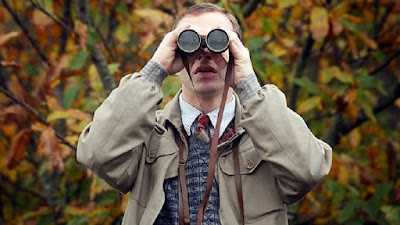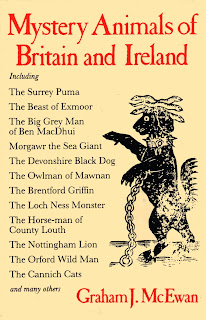The Trails of DOCTOR WHO (1977 - 79)
Out with Gallifrey Gothic, in with the robot dog. DOCTOR WHO - THE INVISIBLE ENEMY mixes an alien prawn with weird science and K9.
DESPITE some post-Hinchcliffe horror flourishes, the Fifteenth Season of DOCTOR WHO is diluted by disposable stories and cut-price visual effects, broadcast under the shadow of STAR WARS then bombarding British cinemas. THE INVISIBLE ENEMY attempted to deal with the psychological by infecting The Doctor (Tom Baker) with a space-borne intelligence, but by the end of the serial the Time Lord is given K9 as a "parting gift". Others included in this season were Robert Holmes' THE SUN MAKERS, which bypassed science fantasy altogether for contemporary political parody, and UNDERWORLD features another insane computer ("Simply ... another machine with megalomania!").
For the previous two seasons, the programme had finished on strong, fan-favourite six-parters: the Krynoid menace of THE SEEDS OF DOOM, and the exploits of Magnus Greel in THE TALONS OF WENG-CHIANG. Unfortunately THE INVASION OF TIME failed to carry on this trend. Claiming presidency of the Time Lords, The Doctor's access to the Matrix enables him to banish the Vardans; yet it is revealed that the Sontarans have used these telepathic aliens for their own means to invade Gallifrey. Written as a late replacement by producer Graham Williams and new script editor Anthony Read - and made under a cloud of potential industrial action - THE INVASION OF TIME is overtly humourous (The Doctor even plays hopscotch in the Citadel), and the arrival of the Sontarans seems like a tacked-on act of desperation. At one point the Vardans resemble tinfoil, and the Sontarans are reduced to getting lost in the TARDIS.

The arrival of the Sontarans in DOCTOR WHO - THE INVASION OF TIME seems like an afterthought. It is also surprising that their demise is at the hands of The Doctor shooting them dead with his de-mat gun.
This tonal shift with DOCTOR WHO was in contrast to the complexities of late-70’s Britain. The Silver Jubilee of 1977 had offered a week of celebratory respite from the country’s inflation, strikes and increasingly violent picket lines. But this embodiment of Olde England seemed particularly out of context against the then bitter disputes at the Grunwick processing plant; and two months later, Lewisham saw the biggest street battle between fascists and anti-fascists since Cable Street in 1936. Even the Christmas 1977 episode of THE GOODIES resulted in their ‘Earthanasia’ skit, where world leaders came to the conclusion that the planet should just be blown up. Ending with a white flash and the sound of an explosion, the show then cuts to the revolving BBC1 globe logo, which follows suit.
1978, however, saw two examples of social politics seep into BBC programming. Terry Nation launched BLAKE'S 7, an anti-STAR TREK where the galaxy is governed by The Federation. This quasi-fascist state uses drugs in the water supply to control its population, and the presence of the beautiful but coldly calculating Servalan (Jacqueline Pearce) cast a long shadow over a land heading towards its first female prime minister. The year also saw the Corporation cancel THE BLACK AND WHITE MINSTREL SHOW - on air since 1958 - as Camden Council became one of the first authorities to address discrimination in employment.
Suzanne Danielle as Movellan Agella in DOCTOR WHO - DESTINY OF THE DALEKS. Danielle also played the title role in CARRY ON EMMANNUELLE, and provided a belly dance for Christopher Lee in ARABIAN ADVENTURE.
The Sixteenth Season adapted an unprecedented format in DOCTOR WHO history. Six individual stories are linked by the over-arching 'Search for the Key to Time' plot, which explored the existence of the White and Black Guardians, a perpetual good versus evil battle that holds the cosmos in balance. In THE RIBOS OPERATION, The Doctor is aided by female Time Lord Romana (Mary Tamm), which reintroduced the troublesome dynamics experienced by Caroline John's partnership with Jon Pertwee; THE PIRATE PLANET saw Douglas Adams' trademark galactic outlandishness not only covering scientific concepts (planet propulsion, flying cars et al), but inevitably showed the beginning of the end for Baker, here talking directly to camera; and THE STONES OF BLOOD jettisons an initial witchcraft premise literally into hyperspace.
Adams became Script Editor for the Seventeenth Season, as the show returned to its familiar guise. With a newly-regenerated Romana (Lalla Ward), even the Daleks look in poor condition for DESTINY OF THE DALEKS, which actually used Skaro sound effects from their initial 1963 appearance. Terry Nation is at his most formulaic for a serial where the titular foes are searching for Davros to aid them in a stalemate with the android Movellans (this seems like a metaphor for the programme reaching out for ideas itself). The most controversial aspect however is that the Daleks, on several occasions, are referred to as robots, perhaps referencing Nation - or Adams' - idea of Dalek evolution from organic mutant to pure automaton. At least it seems more logical that the Daleks and Movellans have entered into a strategic draw because they are both robots, but Nation clouds the mystery further by suggesting that the races' battle computers have led to the situation.

Lalla Ward and Tom Baker enjoy Paris in the series' first overseas shoot for DOCTOR WHO - CITY OF DEATH. With ITV off-air, the serial attracted the highest viewing figures for the show at 16.1m.
However, before the season again descends into pantomime, CITY OF DEATH stands out at an almost cinematic level. Set mainly in 1979 Paris, Scaroth (Julian Glover) attempts to finance experiments in time travel in the hope of averting the accident that marooned him on Earth four hundred million years previously, an act which consequently began the existence of life on the planet. Aided by elegant miniature effects and excellent performances, Glover unsurprisingly brings dignity and gravitas as the last of the Jagaroths, despite his infamous oversized spaghetti/cyclops headpiece. Even the comedic turn of John Cleese and Eleanor Bron as art gallery visitors adds rather than detracts from the fun.
 Greg Wise is more Indiana Jones than M.R. James in NUMBER 13.
Greg Wise is more Indiana Jones than M.R. James in NUMBER 13.
































